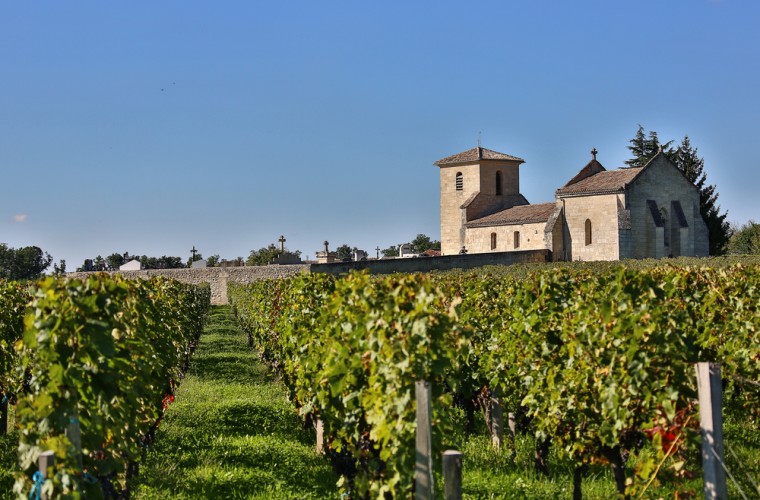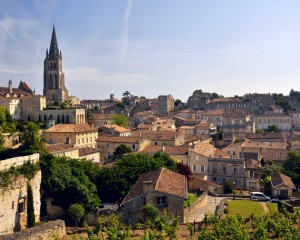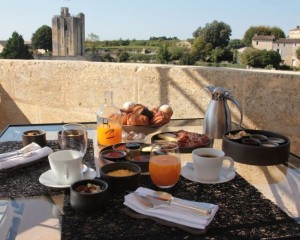38 m in lenght and 12 m high: the monolithic church - that is to say, built out of a single block of stone - is definitely worth a visit. Stories and legends intermingle in this incredible monument: you'll have to see it to believe it!

The monolithic church is an underground religious building dug at the beginning of the 12th century in impressive proportions.
If it reveals itself to the visitor by the position of a 68-metre high bell tower, it then hides behind the elegance of three large "windows" in the façade and a Gothic portal that is often closed (because it is only on a guided tour that you can enter this underground church for an unforgettable experience). The church is as surprising as it is fragile!
In the heart of the city, the monolithic church recalls the religious activity of the city in the Middle Ages and intrigues by its unusual design.



In the village bearing his name, the memory of Emilion is never far away!
This Breton, born in Vannes and famous for his miracles, decided in the 8th century to leave his native land to retire and devote himself to prayer. Following the Atlantic coast, he became a monk and then settled in Ascumbas, the former name of the city of Saint-Emilion.
Joined by a few Benedictine disciples, he founded the first religious community there and evangelised the population. Thus was created the great monastic city to which the faithful gave his name a few centuries later.
The holy man is said to have died in the year 767, after having spent the last seventeen years of his life in his hermitage, a simple grotto located in the heart of the village, a few steps from the monollithic church where his relics were preserved for a time before mysteriously disappearing ...
Little known to the general public, the Hermitage of Saint-Emilion is a magical place. In this cave forming a natural shelter is Emilion's chair or meditation seat, where the monk of the same name used to pray.
Over the years and through stories, this seat has been given the name "Seat of Fertility". Legend has it that a woman wishing to have a child just has to sit on this chair and pray to Saint-Emilion to become pregnant within a year.
"Simple myth will say the most skeptical! "
Except that every year the Tourist Office receives dozens of birth announcements from the many women who come from all over the world especially to sit on this "Seat of Fertility"!
Here are some of Emilion's babies, as we affectionately call them, from the last few years:


When the name Saint-Émilion comes to mind, some will think wine, but others will think delicacies and traditional recipes! Here is an overview of our unmissable local specialities!

This gourmet speciality has been passed down from generation to generation in Saint-Émilion since the Ursuline sisters established their convent in the medieval city in 1620.
During the Universal Exhibition of 1867, these little delicacies were tasted to accompany the wines of Saint-Emilion. The Jury was not mistaken and rewarded both wines and macaroons! Less colourful than Parisian macaroons, Saint-Emilion macaroons are made from sweet and bitter almonds, egg whites and sugar!
Their reputation is well established and no manufacturer has managed to achieve the quality of macaroons made with the recipe of the nuns of Saint-Emilion in the possession of Nadia Fermigier today.
About 500 million years old, the lamprey - sometimes nicknamed "Vampire of the Seas" - is emblematic of the Saint-Emilion Area and symbol of the village of Sainte-Terre. Although already cooked in the Middle Ages in the form of pies, the lamprey has remained on our plates throughout time.
Since 1913, the name "Lamprey à la bordelaise" has allowed visitors to immerse themselves in the regional culture.
The commune of Sainte-Terre proclaimed itself the world capital of the lamprey in 1990. It has therefore chosen to celebrate this 500 million year old aquatic animal and to make it an object of study, encounters and occasions for convivial and gastronomic gatherings! Thus, every year in April, the Confrérie de la Lamproie brings together local amateurs and curious during two days of celebration and sharing: the Fête de la Lamproie.
In the heart of the village, the production of Crémant de Bordeaux (sparkling white or rosé wine made according to the traditional method) has been going on since the 19th century both in the Caves de la Tour du Roy and in the darkness of the underground quarries of the former Franciscan monastery in the Cloître des Cordeliers.



Saint-Emilion's gastronomy is inspired by our local heritage and terroir. Wine plays an important role in this cuisine. It is not surprising that great chefs, such as Philippe Etchebest, have worked here.
Today the Greater Saint-Émilion Area has three Michelin starred tables:
And many other gourmet restaurants will delight lovers of good gastronomy in Saint-Émilion. Traditional, bistronomic or gastronomic cuisine: all taste buds will find dishes to their liking!
of our territory on the World Heritage List by the UNESCO concerns the Jurisdiction of Saint-Émilion, the medieval city of Saint-Émilion, the seven villages that surround it and their vineyards.

The latter extends from Saint-Christophe-des-Bardes, Saint-Laurent-des-Combes, Saint-Hippolyte, Saint-Étienne-de-Lisse, Saint-Pey-d'Armens, Saint-Sulpice-de-Faleyrens to Vignonet.

This territory will be defined as a "family and united wine-growing community" from 1199, where the Jurade was established, until 1999. This definition is one of the foundations of the inscription by the UNESCO which the inhabitants are very proud of. Throughout these years, everyone on their own way has contributed to its meaning and to the sustainability of the Saint-Émilion vineyard.
Key figures of the Saint-Émilion Jurisdiction:
A world-famous region, the Greater Saint-Émilion Area has a rich heritage, marked by the omnipresence of the vine and historic buildings from different eras and architectures, forming the villages and hamlets characteristic of the area.

From the banks of the Dordogne to the cultivated terraces and limestone plateaux, the varied landscapes of the Greater Saint-Émilion Area will surprise you during your visit!
Romanesque, Gothic or monolithic churches mark out the territory like landmarks for visitors on a stroll, while "chateaux" and manor houses spring up here and there as a nice unexpected surprise!
The preservation and development of this unique terroir and heritage make the Greater Saint-Émilion Area an exceptional territory. So enjoy your discovery!
discover the 22 communes that you can visit during your trip
Grand Saint-Emilionnais Tourist Office
Le Doyenné - Place des Créneaux
33330 SAINT-EMILION








